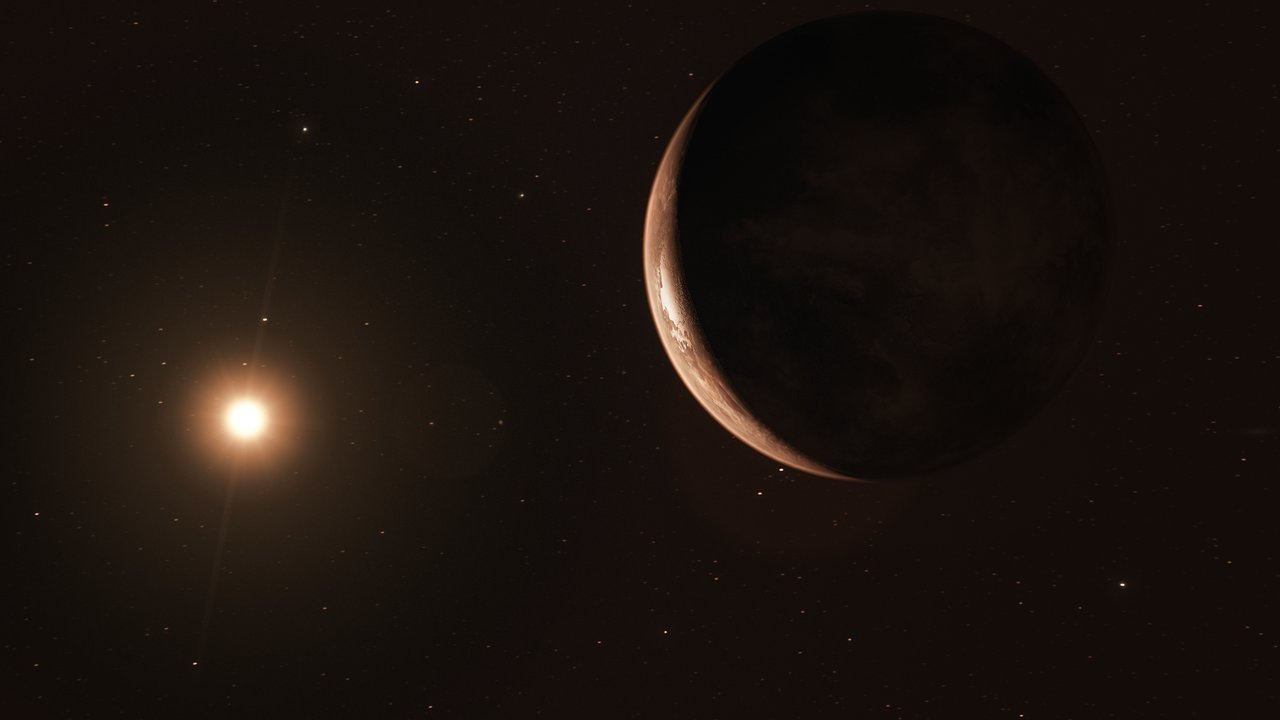After two decades of observing a star called Barnard near our solar system, researchers have found new evidence that the star has a planet orbiting it — a mere six light-years away from us. Barnard, an ancient star that astronomers believe to be twice as old as our Sun, is the second closest star to our system after the Alpha Centauri constellation, a mere 4.2 light years away. This dim red dwarf star is a lone ranger, unlike members of the three-star Alpha Centauri, making the newfound planet orbiting it the second closest ‘
**exoplanet** ’ to Earth. Researchers have named it ‘Barnard’s Star b’. [caption id=“attachment_5554011” align=“alignnone” width=“1280”] This image shows an artist’s impression of the exoplanet viewed from space. Image courtesy: ESO[/caption] “After a very careful analysis, we are 99 percent confident that the planet is there,” Ignasi Ribas, lead researcher from the Institutes of Space Studies in Catalonia and Spain, said in
a statement. “However, we’ll continue to observe this fast-moving star to exclude possible, but improbable, natural variations of… brightness which could masquerade as a planet.” But that isn’t all that makes this discovery significant. The planet is also being categorised a “super-Earth” — a planet having a size somewhere between Earth and a planet 17 times as large — Neptune, for instance. Astronomers estimate that Barnard’s Star b is roughly thrice as large as Earth, based and revolves around its star once every 233 Earth days. This data comes from the High Accuracy Radial velocity Planet Searcher (HARPS) instrument of the European Space Observatory (ESO), part of the ‘Very Large Telescope’ set up in Spain. While it ticks a few of the boxes astronomers look for in a ‘habitable planet’, researchers aren’t so sure about the odds of finding life on Barnard’s Star b. In fact, there’s more reason to believe it is “inhospitable for life as we know it”,
according to the ESO. [caption id=“attachment_5554001” align=“alignnone” width=“1280”]
The nearest single star to the Sun hosts an exoplanet at least 3.2 times as massive as Earth — a “super-Earth”. Data from an array of telescopes has revealed it to be a frozen, dimly lit planet like in the image above, an artist’s impression of the planet’s surface. Image courtesy: ESO[/caption] The planet is just 0.4 times as far as from its star as the Earth is from the Sun. But unlike our Sun, the Barnard star is very dimly lit. It provides the exoplanet with as little as 2 percent of the energy we Earthlings get from our Sun. At the distance the planet is located from the Barnard star, it also falls under a region called the ‘frost line’. This zone around a red dwarf star, as the name suggests, doesn’t bode well for living systems that need a planet warmer than the -170 degrees C on offer at Bernard’s Star b to survive. Despite this bump, the findings from the new study
published in Nature puts decades of dissent between astronomers to rest. Studies on the Barnard Star were put away just a few years ago after hopeless attempts by astronomers to find data and evidence for their theories,
according to Futurism. With any luck, a team of telescopes like Gaia will bring more discoveries like the Barnard’s Star b out from the dust and into focus.
The newly-discovered exoplanet is orbits the fastest moving star in our night sky: Researchers.
Advertisement
End of Article


)
)
)
)
)
)
)
)
)



